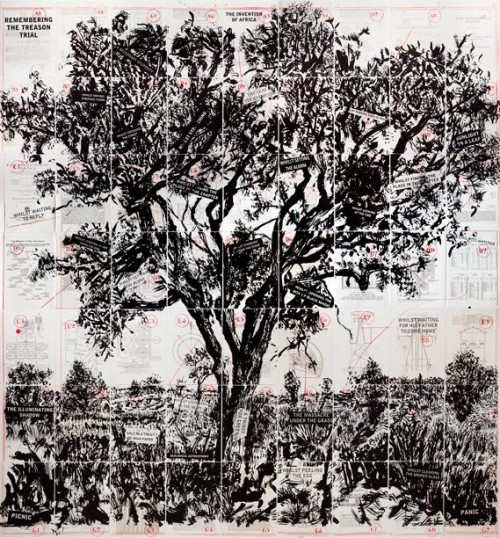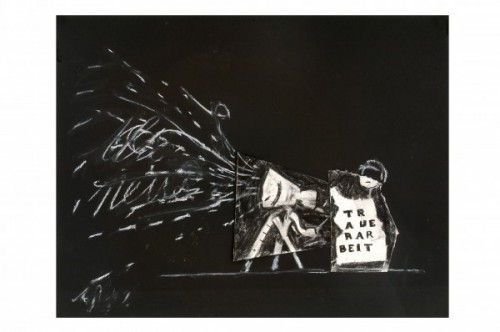Thinking About the Forest and the Trees
William Kentridge thinks a lot about thinking: its errant trails, its spasmodic lurches, its spectacular leaps. Drawing, he has often stressed, can function as a form of thinking but equally– and especially when chased by the artist’s eager eraser – it enacts a wilful un-thinking in which every notion can potentially be undone, and every idea arrives partnered with a nay-saying dialectical double. These revisionary “second thoughts” often assume human, usually Kentridgian form, striding onstage during the artist’s public lectures to chide, correct and contradict. Fingers are wagged, eyebrows raised, eyes rolled in exasperation. “The horn of the rhinoceros is in the wrong place,” one superego character chimes. “I don’t want to hear it,” the other retorts. “But if you would just take the time to look at these textbooks, you could see how it could be done better…” the first nags. “Just fuck off! Just fuck off!” the second repeats exasperatedly. At “Second-Hand Reading,” Kentridge’s recent keynote lecture at the University of Rochester, the themes of second thoughts and second selves (the latter, Stanley …


